Physical Address
304 North Cardinal St.
Dorchester Center, MA 02124
![]()
Neurologic symptoms and diseases are encountered in all spheres of clinical practice. Many symptoms of nervous system diseases are a part of everyday experience for healthy people, whether it be slips of the tongue, headache, numbness, muscle twitches, tremors, or mood swings with feelings of elation and depression. The challenge is to decipher whether symptoms fall within the spectrum of normal health or warrant further investigation. Neurology demands a pragmatic and skillful ap-proach embedded in core principles of clinical medicine.
Knowledge of the structure and function of the nervous system is essential to the diagnostic method in neurology. Through a careful history and neurologic examination, even if performed virtually, the clinician can elicit the key symptoms and signs to formulate problems within an anatomic and pathophysiologic framework, thereby targeting appropriate evaluation. The seasoned clinician can often swiftly arrive at the neurologic diagnosis by extracting the most relevant historical details and generating a hypothesis that can be tested and refined through a reliable neurologic examination. In evaluating a patient’s symptoms and signs, it is valuable to arrive at a clinical diagnosis without reference to neurodiagnostic laboratory findings, which can often be normal when symptoms first appear. Furthermore, the widespread availability of neurodiagnostic imaging and electrophysiologic, biochemical, and genetic testing can lead to the detection of incidental “abnormalities” that often cause unnecessary concern, wasteful extraneous evaluation, and potentially harmful treatment. In general, the adage that it is difficult to improve an asymptomatic patient should be kept in mind.
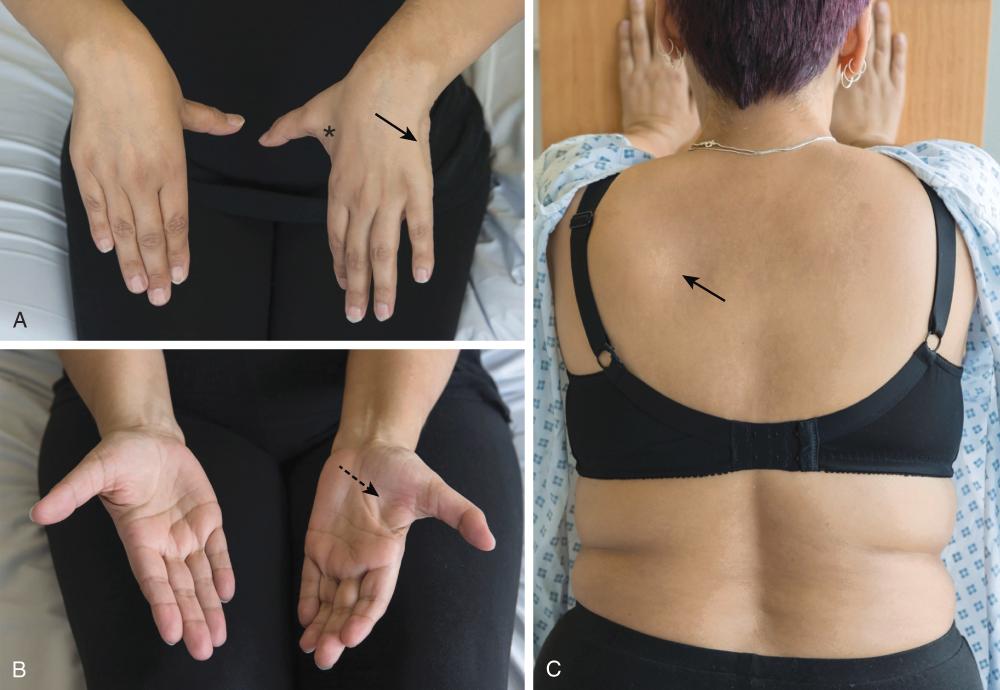
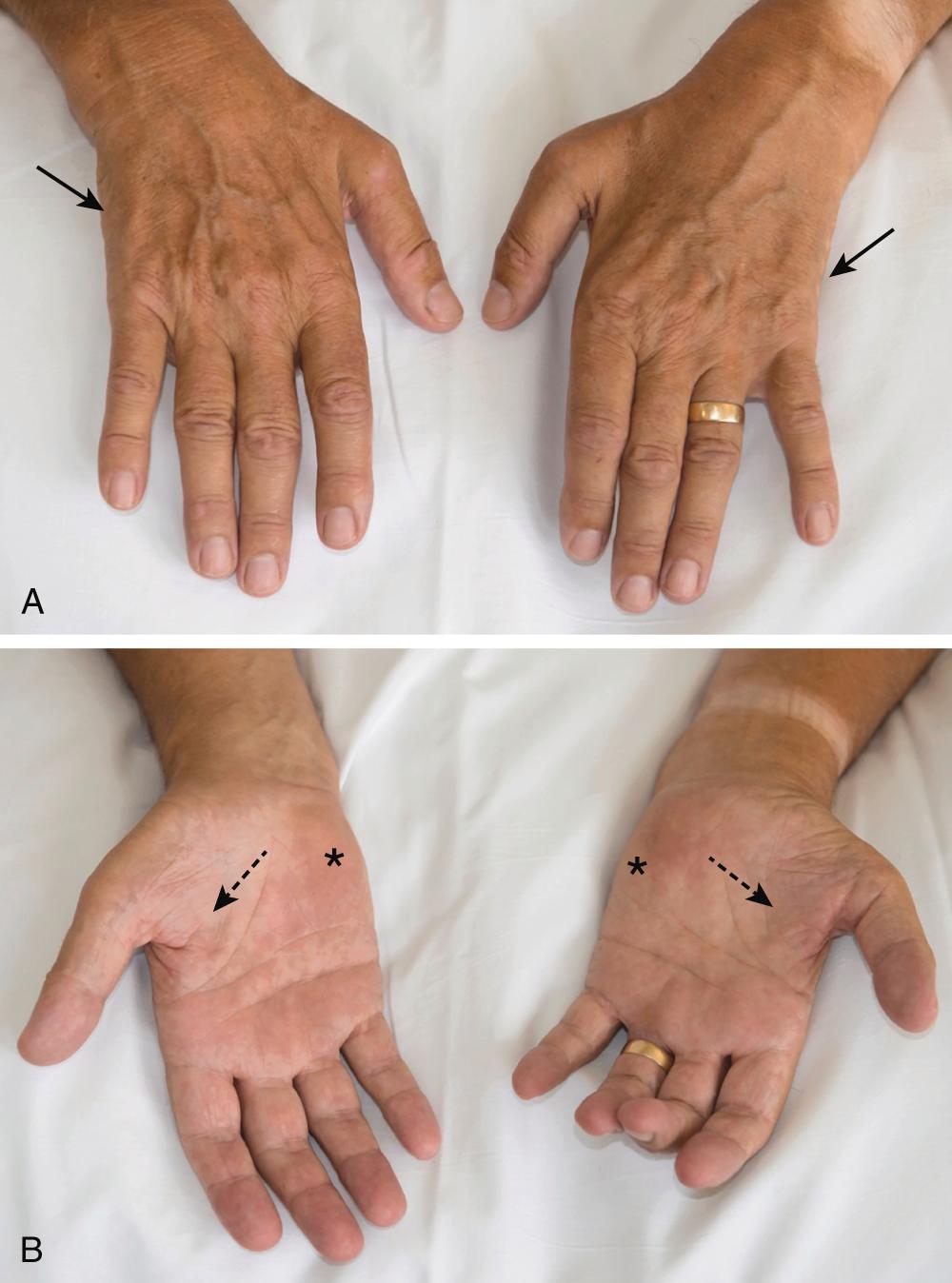

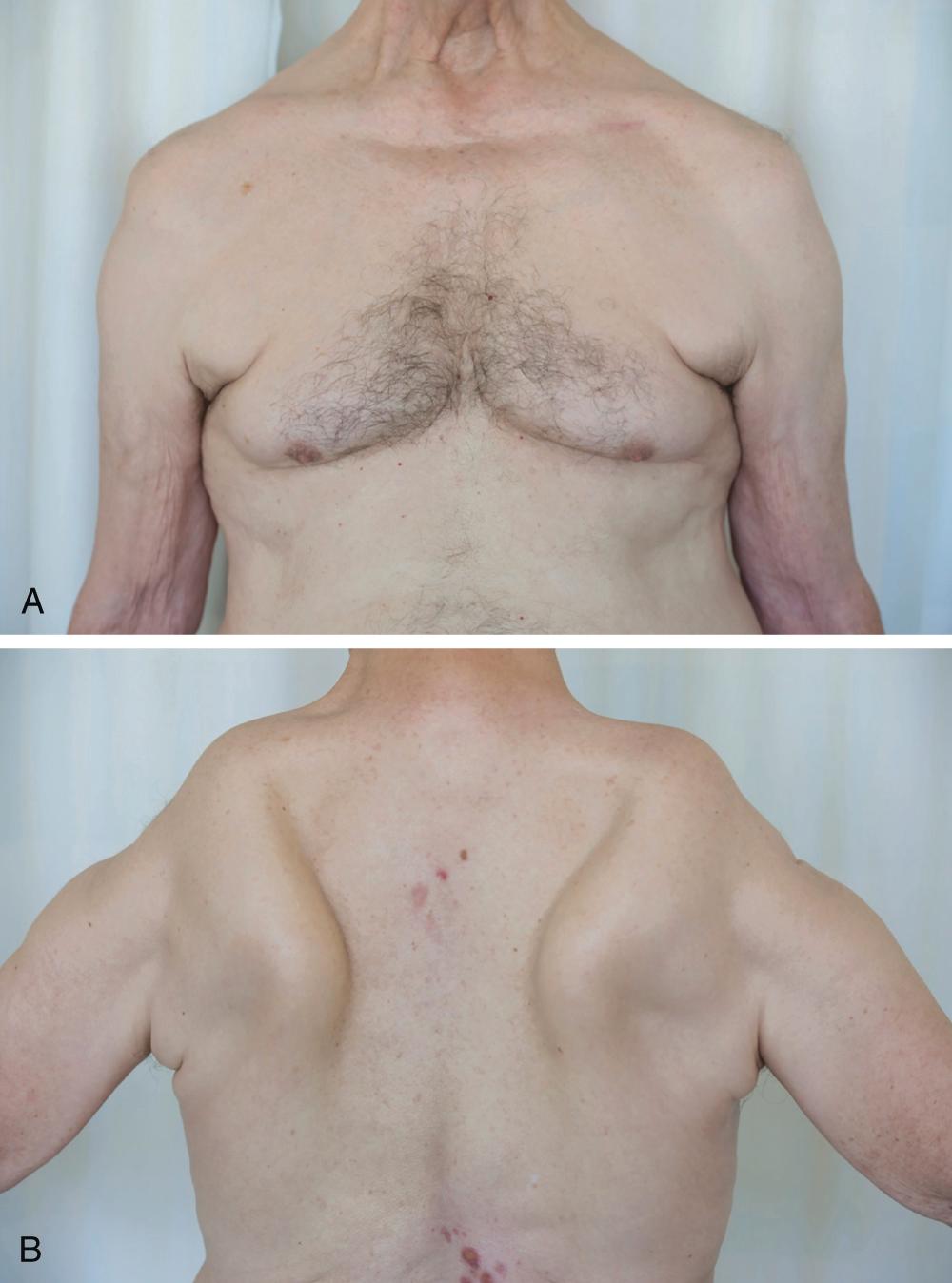
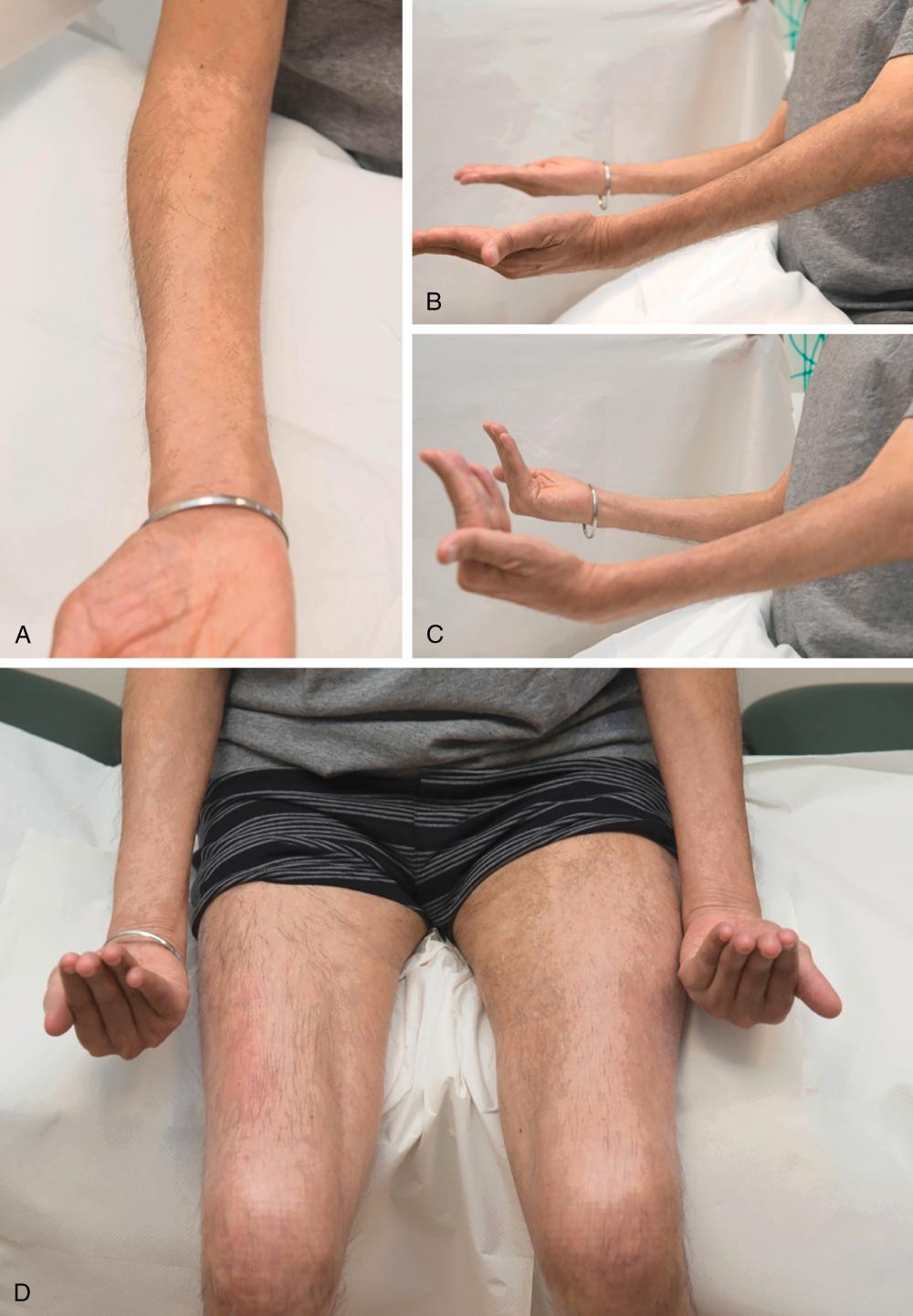
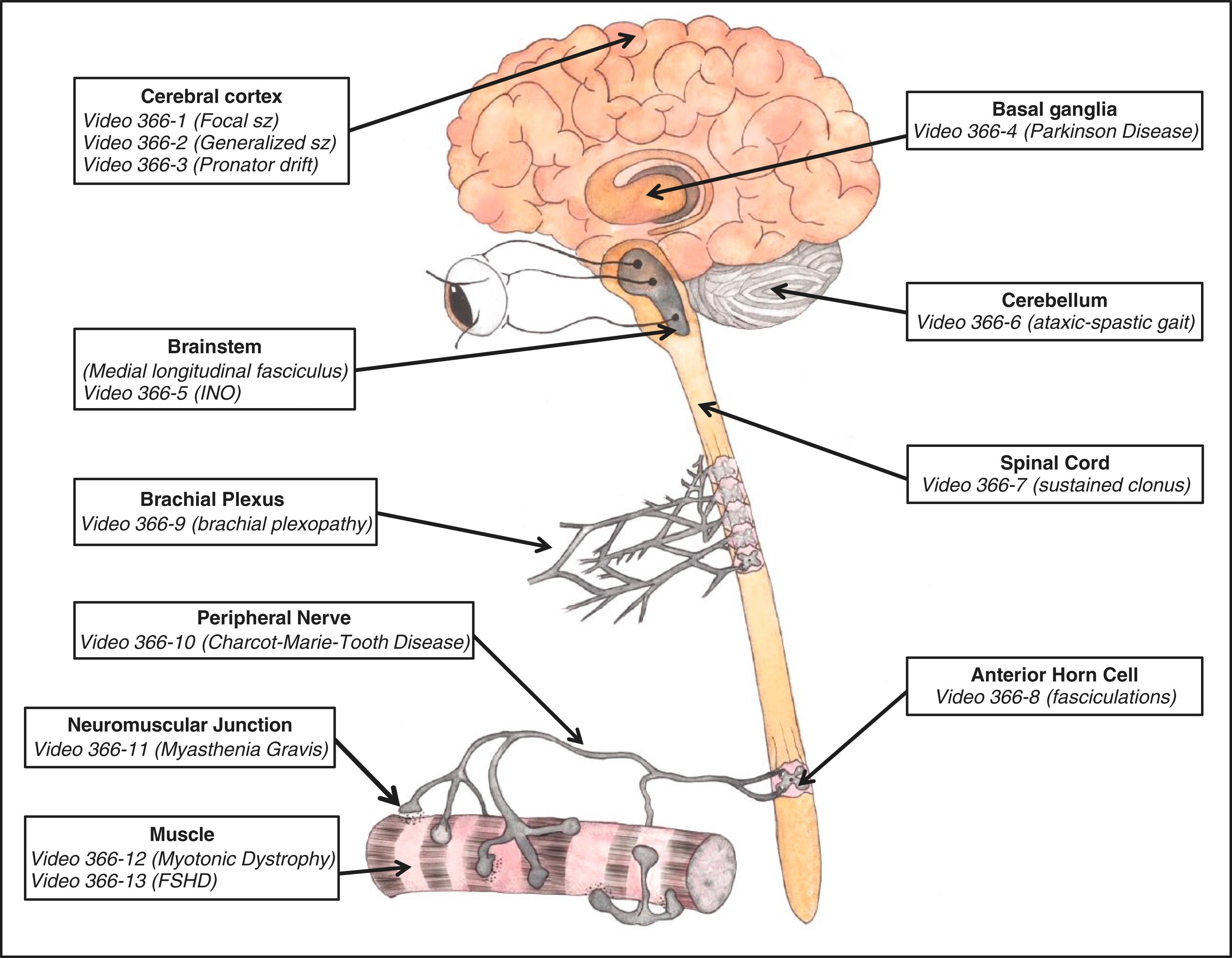
A practical approach to understand the basis of a patient’s neurologic symptoms involves addressing three key questions:
Are the symptoms neurologic?
A patient may present with a constellation of symptoms that masquerade as neurologic (such as “dizziness” in a patient with cardiovascular disease, or perioral tingling in a patient with panic attacks) or as non-neurologic (such as intractable hiccups in a patient with a lesion in the area postrema of the medulla, or abdominal discomfort caused by a thoracic myelopathy). It is important to allow patients to describe symptoms in their own words, but direct questions are often necessary to characterize the problem fully. Terms such as weakness, numbness, heaviness, cramps, and tiredness may each mean pain, weakness, or alteration of sensation to some patients. Clarification of described symptoms provides critical clues to ascertain whether there is an underling neurologic basis for their presentation.
Context is also relevant, because a history of general medical and psychiatric problems may lead one to consider a non-neurologic cause. A history of physical abuse ( Chapter 223 ) or alcohol use ( Chapter 364 ) and drug misuse ( Chapter 365 ) can add a challenging layer of complexity to the interpretation of symptoms.
Where is the lesion?
The organization of the nervous system is such that diseases affecting a neuroanatomic structure usually give rise to specific constellations of neurologic symptoms and signs in keeping with the disrupted function of that structure. For this reason, the clinician should formulate a diagnostic opinion in anatomic terms. The neurologic history and clinical examination are best viewed as a search to detect a pattern of dysfunction where symptoms suggest a lesion of particular neuroanatomic units. The clinician should aim to discern which level of the nervous system is involved—the central nervous system (supratentorial [ Videos 366-1 through 366-4 ], posterior fossa [ Videos 366-5 and 366-6 ], spinal cord/column [ Video 366-7 ]) or the peripheral nervous system (anterior horn cell [ Video 366-8 ], nerve root, plexus [ Video 366-9 and E-Fig. 366-1 ], peripheral nerve [ Video 366-10 and E-Fig. 366-2 ], neuromuscular junction [ Video 366-11 ], muscle [ Videos 366-12 and 366-13 and E-Figs. 366-3 through 366-6 ])—and whether the process is focal (midline or lateralized) or diffuse. Relevant questions include the following: Can one disease account for all of the symptoms and signs? A second issue is whether the history is suggestive of a single focus (e.g., stroke or tumor) or multiple sites of nervous system involvement (e.g., multiple sclerosis), or part of a systemic disease (e.g., vitamin B 12 deficiency, myopathy, or polyneuropathy).
What is the lesion?
In neurologic diagnosis, the history usually indicates the nature of the disease or the diagnosis, whereas the neurologic examination localizes it and quantitates its severity. In arriving at a diagnosis, the following points are useful: consider the patient’s entire medical history; consider the tempo and duration of the symptoms; determine whether the symptoms have been progressive without remission, or whether there have been plateaus or periods of return to normal. Symptoms with an acute onset suggest a vascular cause ( Chapter 375 ) or seizure ( Chapter 372 ); symptoms that are subacute in onset suggest a mass lesion, such as tumor ( Chapter 175 ) or abscess ( Chapter 382 ); symptoms that have a waxing and waning course with exacerbations and remissions suggest a central demyelinating cause ( Chapter 380 ); and symptoms that are chronic and progressive suggest a degenerative disorder. Toxic and metabolic syndromes ( Chapter 384 ) are typically diffuse and can manifest acutely or chronically.
The neurologic history is the most important component of neurologic diagnosis. For many diseases, the history is almost the only avenue to explore. Examples of such disorders include headaches ( Chapter 367 ), seizures ( Chapter 372 ), developmental disorders ( Chapter 385 ), memory disorders ( Chapter 371 ), and behavioral diseases ( Chapter 362 ). A careful history frequently determines the cause. When a neurologic problem is suspected, the physician should begin to try to localize the lesion, a process that aids in establishing whether the disease is diffuse or focal.
The history is often the only way of diagnosing neurologic illnesses that typically have normal or nonfocal findings on neurologic examination. Such illnesses include paroxysmal disorders (such as many seizure disorders [ Chapter 372 ], narcolepsy [ Chapter 374 ], migraine, and most other headache syndromes [ Chapter 367 ], as well as the various causes of dizziness) and most types of dementia. The neurologic history often provides the first clues that a symptom is psychological ( Chapter 362 ) in origin.
To guide the clinician in obtaining a meaningful neurologic history, the following are points to consider:
Carefully identify the chief complaint or problem . Not only is the chief complaint important in providing the first clue to the physician about the differential diagnosis, but it is also the reason the patient is seeking medical advice and treatment. If the chief complaint is not properly identified and addressed, the correct diagnosis may be missed and an inappropriate diagnostic evaluation may be undertaken. Establishing a diagnosis that does not incorporate the chief complaint frequently focuses attention on a coincidental process irrelevant to the patient’s concerns.
Begin with open-ended questions and listen carefully to the patient as long as necessary . The patient often volunteers the most important information at the start of the history. A good rule of thumb is to listen initially for at least 5 minutes without interrupting the patient. During this time, insight into the patient’s mental status (including level of alertness, cognitive function, and behavior), cranial nerve function (e.g., ocular movements [ Video 366-5 ], facial asymmetry [ Video 366-13 ], speech disturbances [ Video 366-11 ]), and motor function (e.g., increase or paucity of spontaneous movements as seen with movement disorders [ Video 366-4 ]) can be gleaned. This period of intent listening and observation allows the physician to follow up with focused and relevant questions and clinical examination maneuvers to formulate an accurate diagnostic opinion.
Clarify the timing of symptoms . In addition to the nature of the onset of the symptom (i.e., acute, subacute, chronic), the timing of symptoms also can provide clues. For example, symptoms may relate to the time of day. Early morning headaches may suggest an underlying sleep disorder, such as obstructive sleep apnea, a psychiatric condition such as anxiety or depression, or an intracranial mass lesion. Abnormal movements at night may point to restless legs syndrome, rapid eye movement (REM) sleep behavior disorder, or frontal lobe epilepsy. The timing of medications is important when evaluating “on”/“off” periods with dopaminergic agents in Parkinson disease or the relationship of chemotherapy to length-dependent sensory/motor peripheral neuropathy. Symptoms may also follow a specific precipitant such as the loss of muscle tone with emotional triggers in cataplexy, the electric-shock–like sensation with neck flexion in cervical demyelination, the numbness and weakness when prolonged focal pressure in a limb causes a compression neuropathy, or new-onset seizures after the use of alcohol or recreational drugs. The muscle weakness of hypokalemic period paralyses typically is exacerbated after a carbohydrate-rich meal.
Obtain a collateral history from surrogate historians . Surrogate historians often provide key or missing information about the onset and evolution of neurologic disorders that alter mental status, whether episodic (e.g., loss of consciousness in syncope [ Chapter 49 ] or epilepsy [ Chapter 372 , Videos 366-1 and 366-2 ]) or progressive (e.g., degenerative dementia [ Chapter 371 ] or cerebral tumor [ Chapter 175 ]) or influence a patient’s awareness of disease (e.g., anosognosia in nondominant hemispheric lesions). Importantly, surrogate historians can provide real-life context that casts light onto the severity and impact of the patient’s symptoms on his or her functional status.
Take a complete past medical, medication, psychiatric, family, and social and occupational history . Many neurologic illnesses are complications of underlying medical disorders or are due to adverse effects of drugs. For example, posterior reversible encephalopathy syndrome can be a complication of renal disease ( Chapter 100 ) and encephalopathy after bariatric surgery can be secondary to thiamine deficiency ( Chapter 384 ). Parkinsonism ( Chapter 378 ) is a frequent complication of the use of antinausea medicines (e.g., metoclopramide or prochlorperazine) and many neuroleptic agents ( Chapter 402 ). A large number of neurologic disorders have a hereditary component, so a positive family history often can help establish the diagnosis. Occupational exposures play a role in various neurologic disorders, such as carpal tunnel syndrome (e.g., repetitive injury in machine operators or people who use keyboards), peripheral neuropathy (e.g., lead or other toxin exposure), and parkinsonism (e.g., heavy metal exposure).
Summarize the history for the patient . A summary of the history is an effective way to ensure that all details were covered sufficiently for a tentative diagnosis to be made. This summary provides an opportunity for the physician to fill in historical gaps not apparent when the history was initially taken, as well as for the patient or surrogate to correct any historical misinformation.
End by asking if the patient had considered or was concerned about a particular diagnosis and what the patient’s expectations are for the visit . These questions allow the physician to evaluate the patient’s concerns about and insight into his or her symptoms and/or condition. Some patients have a specific diagnosis in mind that spurs them to seek medical attention. Multiple sclerosis ( Chapter 380 , Videos 366-5 and 366-6 ), amyotrophic lateral sclerosis ( Chapter 387 , Video 366-8 ), Alzheimer disease ( Chapter 371 ), and brain tumors ( Chapter 175 ) are diseases that patients often suspect may be the cause of their neurologic symptoms. The discussion will also help guide how to discuss prognosis, especially in patients with advanced neurologic disease.
Avoid referral bias and keep an open mind . Often patients come to a consultation with a neurologic diagnosis already in mind, whether it be self-generated or from the referring physician. In these situations, it is important to steer the patient away from discussions of previous diagnostic test results and the opinions of previous health care professionals. Clinicians can sometimes be influenced by the opinion of their colleagues and, as a result, potentially overlook key historical elements that may prove central to the diagnosis.
Do not be misled by incidental findings on neurodiagnostic studies . Lesions such as congenital anomalies of the brain or spinal cord, small meningiomas, subarachnoid cysts, small cavities in the spinal cord, degenerative changes of the spine, and small cerebral aneurysms detected by CT or MRI scanning are often incidental findings or even normal variants rather than the causes of current symptoms. A good rule to remember is “never order (or look at) a test until you have decided what you are looking for.”
Traumatic injury ( Chapter 368 ) and substance misuse ( Chapters 364 and 365 ) are usually difficult to detect by the medical history and examination. Physically, sexually, and/or emotionally abused individuals are often unable or unwilling to report abuse even though such harm may cause or contribute to symptoms. People who abuse alcohol ( Chapter 364 ) or toxins ( Chapters 365 ) do not typically give an accurate account of their use of these agents, which themselves may cause a host of neurologic disorders. Therefore, a systematic and sensitive consideration of the possibility of these frequent causes of neurologic symptoms is important in every patient. Awareness of and attention to the often-subtle signs that suggest physical trauma ( Chapter 223 ) is of paramount importance.
Most neurologic diagnoses are made by a careful, thorough history and an appropriately complete examination. However, the tempo of illness and the availability of life-saving treatment that is effective only if administered within minutes of evaluating a patient dictate rapid action in several specific circumstances. Coma ( Chapter 373 ), repetitive seizures ( Chapter 372 ), acute stroke ( Chapters 376 and 377 ), suspected meningitis and encephalitis ( Chapters 381 and 383 ), head and spine trauma ( Chapter 368 ), and acute spinal cord compression are diagnosed by clinical and laboratory assessment, and urgent treatment must be instituted as soon as ventilation and cardiac status are stabilized.
For acute spinal cord compression, the differential diagnosis includes transverse myelopathy ( Chapter 380 ), spinal shock ( Chapter 368 ), central cord syndrome ( Chapter 368 ), hemicord (Brown-Séquard) syndrome ( Chapter 368 ), conus medullaris syndrome ( Chapter 369 ), and cauda equina syndrome ( Chapter 369 ). The cause may be acute spinal trauma ( Chapter 368 ), a spinal epidural abscess ( Chapter 382 ), or a spinal epidural hematoma ( Chapter 369 ). Emergent imaging is indicated and should be followed, if possible, by targeted surgical therapy.
The neurologic examination is an extension of the history that can affirm the presence of disease; detect unsuspected or subclinical findings; localize the process when there is a fixed lesion; and provide a clue to etiology. For these reasons, many tests of neurologic function are routinely indicated in all patients. For practical purposes, however, there is no “complete” neurologic examination; the skilled clinician implements a core examination and adds or subtracts layers, as clinically indicated.
The neurologic examination should be tailored to the clinical setting of the patient. The approach to an ambulatory office patient is considerably different than the approach to a critically ill patient. The examination of a patient with specific complaints focuses on findings pertinent to that patient. Thus, more detailed testing of cognition is indicated in patients with behavioral or memory disturbance, and more detailed testing of sensation should be performed in patients with complaints of pain, numbness, or weakness. It is important to perform all routine tests in patients with abnormalities in one sphere of neurologic dysfunction; otherwise, erroneous localization of a lesion or disease process can occur. For deviations from normal to be recognized and quantitated, a physician must have extensive experience in the routine assessment of healthy individuals.
Specific neurologic symptoms or signs should prompt a general physical examination focused on conditions that may have neurologic significance. Examination of the scalp and skull should focus on any abnormalities of the contour or symmetry. Localized thickening of the skull or a cluster of abnormal blood vessels could suggest an underlying meningioma ( Chapter 175 ) or arteriovenous malformation ( Chapter 377 ); depressions in the skull may represent the consequence of fracture ( Chapter 368 ). An enlarged head circumference in an adult (greater than 55 to 60 cm) is occasionally a normal, often hereditary variant but could point toward a long-standing anomaly of the brain or spinal cord in a patient with underlying central nervous system disease. Neck range of motion, straight-leg raising, and spinal curvature (scoliosis; Chapter 86 ) should be assessed. Deformities of the spinal column or extremities may suggest the cause of presenting neurologic signs or provide an adequate non-neurologic explanation for the chief complaint.
The skin should be inspected for neurofibromas and café au lait maculae (e.g., neurofibromatosis type I; Chapter 385 ), adenoma sebaceum (e.g., tuberous sclerosis; Chapter 385 ), lipomas (e.g., lipomatosis), vascular nevi (e.g., Sturge-Weber syndrome [ Chapter 385 ] if in trigeminal nerve distribution), and brown hair nevi/pad of fat or skin dimple (e.g., spina bifida or myelodysplasia when found over the sacral region). Peripheral nerve lesions may be associated with vasomotor or trophic changes to the overlying skin and/or irregular hair or nail growth.
Assessment of blood pressure and heart rate (with orthostatic measurements, where indicated) should be routinely performed. Carotid auscultation for bruits is indicated in older adults, especially in the presence of focal neurologic symptoms or signs. Evaluation of peripheral pulses may provide important clues relevant to sensory or motor complaints.
In patients with bladder, bowel, or leg symptoms, evaluation of rectal sphincter tone is usually indicated. Limitation of joint range of motion or painless swelling of joints may be a sign of an unsuspected neurologic lesion. The presence of enlarged lymph nodes should raise suspicion of underlying infection or malignancy affecting not only those nodes but also parts of the nervous system.
The neurologic examination begins with the first sight of the patient and continues throughout the consultation. The handshake, manner of walking and seating, nature of clothing, and general comportment can provide useful clues that help guide the history and examination. Facial features may direct clinicians to specific lines of inquiry and examination, such as with prominent supraorbital ridges and jaw (acromegaly; Chapter 205 ), protruding ocular globes and eyelid retraction with staring expression (exophthalmic goiter; Chapter 207 ), frontal balding, ptosis, and drooping mouth (myotonic dystrophy; Chapter 389 , Video 366-12 , E-Fig. 366-3 ), fatigable ptosis and snarling expression (myasthenia gravis; Chapter 390 , Video 366-11 ), and expressionless facies with reduced blink frequency (Parkinson disease; Chapter 378 , Video 366-4 ).
The various aspects of the detailed neurologic examination are considered in specific symptom and disease sections noted later. The major components of the examination include mental status, cranial nerves, motor (including reflexes), sensory, cerebellar/coordination, and gait and should form part of the clinician’s “core” examination and be assessed in all patients.
A careful medical history often provides an adequate assessment of mental status: level of consciousness, orientation, memory, language function, affect, and judgment. Abnormalities in any of these functions demand more detailed testing. Detailed mental status testing is also indicated when the chief complaint suggests a cognitive problem.
Cranial nerve function that should be tested in all patients includes visual acuity (with and without correction); optic fundi; visual fields; pupils (size and reactivity to direct and consensual light); ocular motility ( Video 366-5 ); jaw, facial, palatal, neck, and tongue movement (e.g., tongue fasciculations, Video 366-8 ); and hearing.
Examination of motor function ( Chapter 389 ) is essential in all patients. The patient should be observed for tremor ( Chapter 379 , Videos 366-4 and 366-10 ) and other abnormal movements, and the muscles inspected for fasciculations ( Video 366-8 ). Muscle bulk (atrophy or hypertrophy), tone (flaccid, spastic, or rigid), and strength can be assessed rapidly. The distribution of weakness often sheds light on localization based on the pattern (e.g., upper motor neuron, myotomal, peripheral [ Videos 366-9 through 366-11 and 366-13 ]). Strength testing should include assessment of specific functional activities, including the ability to sit up from a supine position, to rise from a deep knee bend or deep chair, to walk on heel and toe, to lift the arms over the head, and to make a tight fist.
Muscle stretch reflexes are the most objective component of the motor examination and are useful in confirming the localization (i.e., central versus peripheral) of motor dysfunction. Reflexes and plantar responses should take into account right-left symmetry and disparity between proximal and distal reflexes in a limb or between arm and leg reflexes. Biceps, triceps, brachioradialis, quadriceps, and ankle reflexes should be quantitated from 0 to 4 (0 = absent; 1 = hypoactive; 2 = normal; 3 = brisk; 4 = clonus).
Sensory testing ( Chapter 388 ) need not be detailed unless there are sensory symptoms. However, the evaluation of at least one large fiber (e.g., vibration or joint position sense with use of tuning fork or by moving a distal joint, respectively) and one small fiber (e.g., pain or temperature with respective use of a single-use pin or warmed tuning fork) should be performed. If sensory changes do not follow a peripheral pattern, cortical sensory function should be tested (i.e., two-point discrimination, graphesthesia, stereognosis).
Appendicular (finger-nose-finger, heel to shin) and truncal (station) function ( Video 366-6 ) should be assessed. Rapid alternating movements of the tongue, hands, fingers, and feet can point to a pyramidal, extrapyramidal, or cerebellar lesion if the rate, amplitude ( Video 366-4 ), or rhythm, respectively, is affected. Asymmetry of movement should be noted. A pronator drift is a sensitive sign of upper motor neuron weakness.
The assessment of a patient’s ability to stand and walk provides important clues about motor, sensory, and cerebellar function. The patient should be instructed to walk across the room normally, then on his or her heels, then toes, and then in tandem (heel to toe) ( Videos 366-4 , 366-6 , and 366-10 ). If an ambulatory patient is able to rise from a deep knee bend and walk on heels and toes, lower limb strength is likely normal and may preclude the need for individual muscle testing. Postural instability should be evaluated ( Videos 366-4 and 366-6 ).
In the patients with reduced level of consciousness, lesions in the ascending reticular activating system, thalamus, or diffuse injury to the cerebral hemispheres should be considered. To evaluate these possibilities, a rapid examination that differs considerably from an alert, aware individual is required ( Chapter 373 ). In such patients, many aspects of the neurologic examination cannot be tested, but considerable information can still be gleaned. On inspection, attention should focus on the examination of the level of consciousness, respiratory pattern, position of eyelids and eyes in primary gaze, size of pupils, and spontaneous eye and limb movements. Signs of injury related to seizures, including tongue biting, should be sought. Assessment of the optic fundi should look for hemorrhage (see Fig. 391-28 in Chapter 391 ) or papilledema (see Fig. 391-25 in Chapter 391 ), and examination of cranial nerve reflexes, including pupillary, corneal, vestibulo-ocular, and gag reflexes, can provide valuable insight into possible contributory intracranial processes and brainstem function. The nature and distribution of motor responses to (painful) stimuli assist localization. Muscle stretch reflexes when obviously asymmetrical suggest dysfunction of the motor unit. However, minor asymmetries are much less important than in an awake patient, especially given that reflexes are likely to fluctuate from one moment to the next. Particular elements of the general examination must also be assessed quickly: evidence of cranial and spinal trauma, tenderness of the skull to percussion, nuchal rigidity (but not in patients with head or neck trauma), and evidence of physical abuse.
Become a Clinical Tree membership for Full access and enjoy Unlimited articles
If you are a member. Log in here